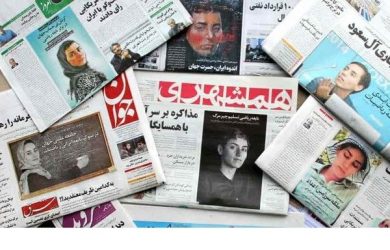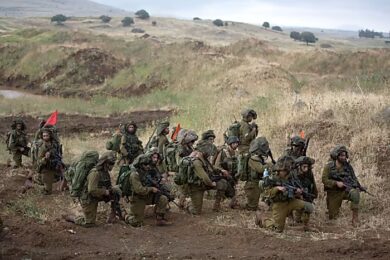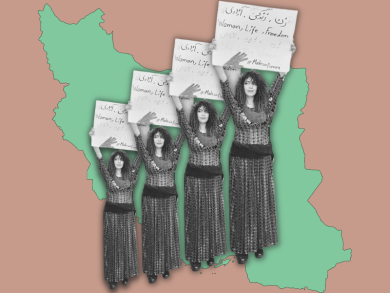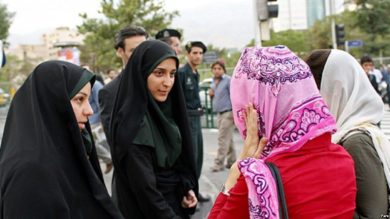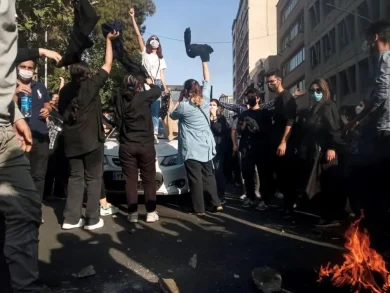In the Islamic Republic of Iran, the mandatory hijab is not just a dress code—it’s a tool of state control. What began as a personal form of resistance against this enforced law has now transformed into a nationwide movement, with women at the forefront, removing their headscarves in defiance of one of the most symbolic pillars of the regime. This movement has not only challenged the IRGC’s authority, but it has also shaken the foundation of decades-long gender oppression in Iran.
This opinion article explores how individual acts of protest around the hijab have evolved into a powerful national uprising, and why these acts represent more than a fight over clothing—they symbolize the demand for freedom, dignity, and democracy.
1. The Hijab: From Symbol of Modesty to Instrument of Control
A. The Law
Following the 1979 revolution, mandatory hijab laws were introduced, making it compulsory for women to cover their hair in public. The enforcement of these laws was handed to morality police and ultimately overseen by the IRGC.
B. More Than Fabric
In this context, the hijab became more than a religious practice; it was a state-imposed identity, enforced through intimidation, surveillance, arrest, and sometimes violence.
2. Personal Defiance: The Early Sparks
A. Women on the Streets
Over the years, Iranian women began to challenge the law in small but powerful ways—pushing their scarves back, posting photos online, or walking unveiled in public spaces.
B. Online Campaigns
Campaigns like #WhiteWednesdays and #MyStealthyFreedom, initiated by Masih Alinejad, allowed Iranian women to share videos and images of themselves without hijab. These became acts of civil disobedience and a rallying cry for others.
3. Mahsa Amini: The Catalyst for a National Movement
In 2022, Mahsa Amini, a 22-year-old Kurdish Iranian woman, was killed in police custody after being detained for “improper hijab.” Her death became the spark for the “Women, Life, Freedom” movement.
Protests erupted across the country, where women burned their scarves, cut their hair, and chanted for regime change. What had been personal acts of defiance were now public calls for revolution.
4. The IRGC’s Violent Response
The IRGC and its affiliated forces responded with deadly force:
• Thousands of women and girls were arrested.
• Torture, sexual assault, and killings of female protesters became widespread.
• Schools, universities, and public spaces turned into battlegrounds.
But despite the brutality, women continued to resist.
5. Hijab as Protest: A New Feminist Paradigm
The act of removing the hijab in public has become the most visible form of protest in modern Iran—powerful, symbolic, and viral. For many:
• It challenges the regime’s ideological foundation.
• It unites diverse ethnic and social groups.
• It transcends religion—many Muslim women support voluntary hijab but oppose compulsion.
This has created a new feminist wave, one that is:
• Grassroots-driven
• Inclusive
• Fearless in confronting state power
6. A Youth-Led, Women-Led Revolution
The driving force behind this movement is Generation Z—teenagers and young women born under repression but unafraid of it. Girls as young as 16 have:
• Led school protests
• Ripped photos of Supreme Leader Khamenei
• Used TikTok, Telegram, and Instagram to bypass censorship
This shows that the future of Iran is being shaped by women who refuse to be silenced.
7. Global Solidarity and the World’s Role
A. International Support
From Berlin to New York, solidarity protests erupted. Governments imposed sanctions on IRGC officials and condemned Iran’s violence against protesters.
B. Diaspora Influence
The Iranian diaspora—especially women—have used their platforms to amplify the movement, lobby for action, and keep global attention on Iran.
8. The Struggle Continues: Hijab as Ongoing Resist
Even as protests fade from headlines, the hijab remains a battlefield. In 2024, the regime reintroduced stricter hijab enforcement, but many women continue to walk unveiled. This quiet defiance is no less radical—it is daily resistance.
Conclusion: From Personal to Political, From Protest to Power
Removing the hijab in Iran is not a fashion statement—it’s a political act. It’s a statement that says:
“My body is mine. My voice matters. I choose freedom.”
What began as personal defiance has become a national rebellion. And that rebellion is being led by women, one headscarf at a time.
Join Our Newsletter!
Stay informed with the latest updates, news, and ways to take action in the fight for justice and global security. Sign up now to get updates delivered straight to your inbox!

